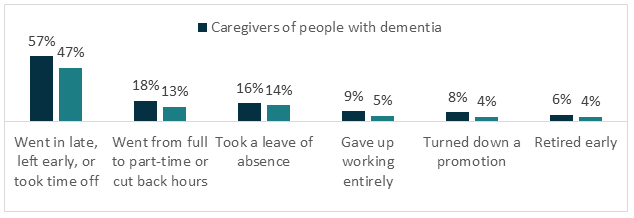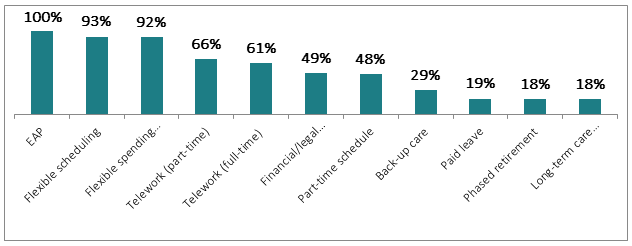January 09, 2020
Alzheimer’s Disease is an irreversible, progressive brain disorder that slowly destroys memory and thinking skills and, eventually, the ability to carry out the simplest tasks. It is the most common cause of dementia in older adults.
Dementia is a loss of thinking, remembering, and reasoning skills that interferes with a person’s daily life and activities. While dementia is more common with advanced age, it is not a normal part of aging.
The number of Americans with Alzheimer’s disease is growing. According to the Alzheimer’s Association, an American develops Alzheimer's every 66 seconds. By 2050, it will be every 33 seconds. Here are a few other facts to know:1
- Alzheimer’s disease is the 6th leading cause of death in the U.S.
- In 2017, Alzheimer’s and other dementias will cost the nation $259 billion
- 1 in 10 people age 65 and older have Alzheimer’s or dementia
- 2/3 of Americans with Alzheimer’s are women, and similarly 2/3 of Alzheimer’s caregivers are women
- More than 5 million Americans are living with Alzheimer’s, and by 2050, 16 million Americans could have Alzheimer’s disease
- Since 2000, deaths from heart disease have decreased by 14% while deaths from Alzheimer’s disease have increased by 89%
- The cost of Alzheimer’s and other dementias could rise as high as $1.1 trillion by 2050
Alzheimer’s Disease and the Workplace
- The average health care costs is 3x higher for persons with dementia than those without
- A survey of more than 3,500 American caregivers of someone with dementia found:
- On average, friends and family spent more than $5,000 a year of their own money on expenses for their loved ones with dementia
- Nearly half of caregivers took money from their savings or retirement fund
- 41% of caregivers of someone with dementia have a household income of $50,000 or less
The Cost of Dementia
- Dementia costs American businesses $61 billion per year
- $24.6 billion related to costs associated with Alzheimer’s and other dementia care (e.g., health, long-term and hospice)
- $36.5 billion in other costs, including lost productivity related to employees providing care
Impacts of Dementia & Caregiving: Work & Productivity
Nearly 16 million Americans provide unpaid care for people with Alzheimer’s or other dementias, and six in 10 of these caregivers were employed in the past year. The chart below displays caregiving impacts on work and productivity.1
- Approximately 30-40% suffer from depression, compared with 5%-17% of non-caregivers of similar ages
- Compared to caregivers of people without dementia, they are twice as likely to indicate substantial emotional, financial and physical difficulties

- 59% rated emotional stress of caregiving as high to very high, and the chronic stress of caregiving is associated with physiological changes that could increase the risk of developing chronic conditions
- 74% are “somewhat concerned” to “very concerned” about maintaining their own health since becoming a caregiver
- Over 1 in 3 dementia caregivers report that their health has gotten worse due to care responsibilities
- Increased depressive symptoms among caregivers over time are linked to more frequent doctor visits, a higher number of outpatient tests and procedures and greater use of over-the-counter and prescription medications
What Can Employers Do?
- Education and Communication
- Supports for Caregivers
- Supports for Employees with Alzheimer’s or Dementia
Education and Communication
- Increase awareness and promote conversations through lunch-n-learns, print or digital resources, intranet posts, apps, videos and email blasts
- Create an open door policy, ensure employees know HR and/or their supervisors are available to discuss personal needs and available resources, and consider adding a question during performance and/or one-on-one conversations about responsibilities and goals outside of the office
- According to 2010 Pfizer-ReAct/Gallup poll of 2,805 caregivers, 28% of those caring for an aging parent, relative or friend report their employers are unaware of their caregiving status*2
- Educate the workforce on early identification
- Address stigmas related to dementia, ageism and mental illness
- Encourage participation in corporate, community and philanthropic activities
Supports for Caregivers
Be proactive in assessing the work impacts of caregiving responsibilities, promoting the use of available supports, and developing agreed upon, individualized plans. Furthermore, employers must comply with all applicable legal requirements related to dementia and caregiving, such as provisions under the ADA, FMLA, EEOC guidance, state and local laws and union contracts.
- Flexible schedules and telework
- Part-time work and job sharing
- Phased retirement
- Leave (including FMLA) and leave sharing
- EAP and other mental health supports
- Wellness and coaching services
- Insurance programs
- Professional care management services, including in-home care assessments, facility reviews or post-hospitalization assessments
- Flexible spending accounts
- On-site care, respite care and back-up care
- Care subsidies and discount programs
- Transportation assistance
- Financial advice (e.g., understanding Medicare/Medicaid reimbursement, elder care tax credit)
- Free or low-cost legal assistance
- Caregiver affinity or support group
- A list of local resources and referrals (e.g., local eldercare experts, senior centers, etc.)
Quick Survey on Caregiving
In 2017, the Business Group administered a quick survey on supports for caregivers. Fifty-four Business Group members responded to the survey, and 88% of respondents indicated that caregiving will become an increasingly important issue in the next five years. The chart below shows the percentage of employers offering various supports for caregiving.
Note: Less than 10% indicated offering leave sharing (5%), access to respite care (8%), on-site support groups (8%), employee discounts (6%) and subsidies (2%) for elder/adult care.

Supports for Employees with Alzheimer’s or Dementia
- Assess safety and organizational risks and consider reasonable accommodations
- Use memory aids (e.g., notes and electronic reminders, calendars, to-do lists, recording devices) and other assistive technology
- Provide simple written instructions and choose tasks fit for the person’s ability
- Use long-term memories, habits, over-remembered skills and individual strengths
- Limit distractions (e.g., offer ear plugs or headphones), interruptions and clutter
- Help plan daily activities and maintain a structured routine
- Keep thorough records
Although early-onset Alzheimer’s (occurring before age 65) is rare, dementia can directly impact employees. Whether an individual can continue work will depend on their circumstances, and employers should treat this sensitive issue with compassion, balancing the individual and business needs. Furthermore, employers must comply with all applicable legal requirements, such as provisions under the ADA, EEOC guidance, state and local laws and union contracts.3
- 1 | Alzheimer’s Association. 2017 Alzheimer’s disease facts & figures. https://alz.org/documents_custom/2017-facts-and-figures.pdf.
- 2 | Witters D. Caregiving costs U.S. economy $25.2 billion in lost productivity. Gallup News. http://news.gallup.com/poll/148670/Caregiving-Costs-Economy-Billion-Lost-Productivity.aspx. 2011.
- 3 | Alzheimer’s and Dementia Alliance of Wisconsin. How to identify, approach and assist employees with young onset dementia: A guide for employers. http://www.alzwisc.org/employer guides/Employer Guide.pdf.
